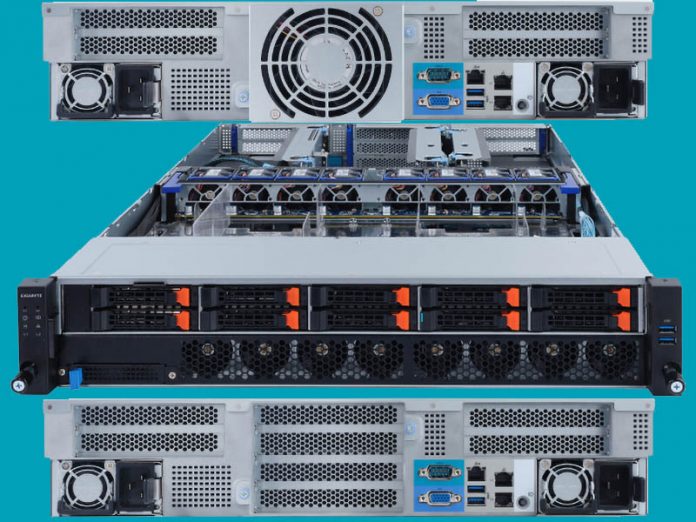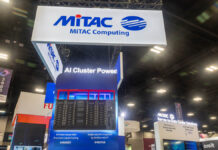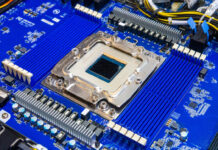Gigabyte largely focused on the single and dual-socket server markets. With the 3rd Generation Intel Xeon Scalable “Cooper Lake” launch, Gigabyte is moving into the 4-socket space with new 2U server offerings. The two new Cedar Island platforms offer something new in the Gigabyte server range. They are built around the same platform, with an important design difference.
Gigabyte R292-4S0 Cooper Lake GPU Compute Platform
The Gigabyte R292-4S0 is a Cooper Lake 4P platform designed for GPU compute. Along with the ten front-panel NVMe SSDs, the system is designed to support up to four double-width GPUs.
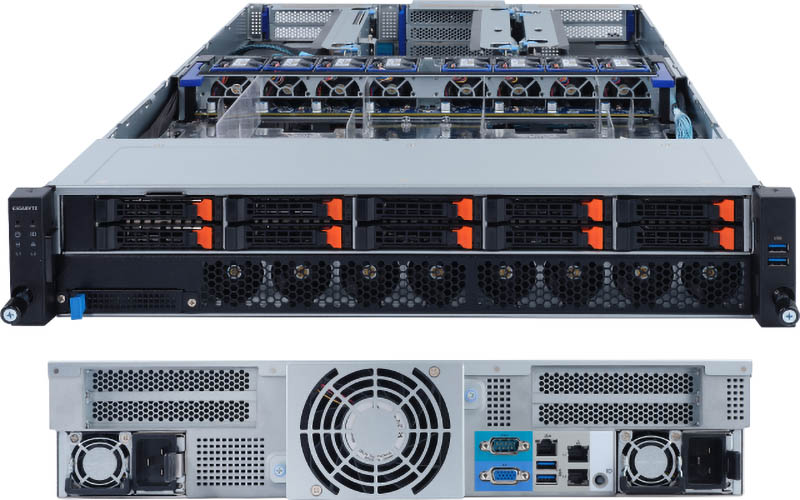
These double-width GPUs are positioned with one over each power supply. The third and fourth GPUs are stacked in the centerline of the chassis. To aid in cooling, the R292-4S0 has an additional fan in the middle rear of the chassis. Here is the block diagram.
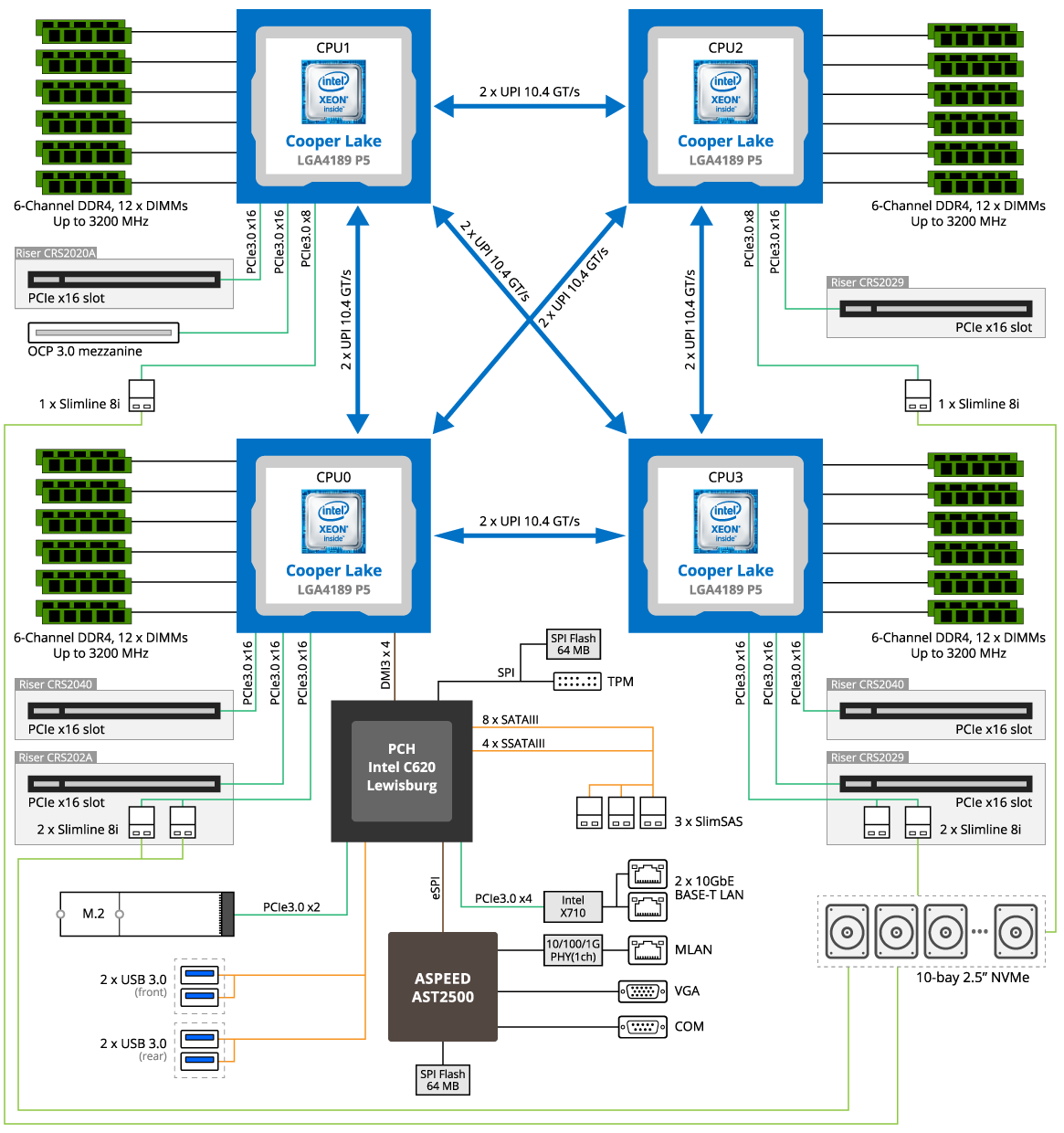
As you can see, each CPU has a PCIe x16 riser slot that it is attached to. As a result, each GPU is effectively paired with a double-width GPU or other accelerators. Key here is that the CPUs have two UPI links at up to 10.4GT/s between each socket. That greatly increases bandwidth for accelerated platforms.
Gigabyte R292-4S1 Mainstream 4P Compute
The Gigabyte R292-4S1 is a mainstream compute platform for 4P Cooper Lake Xeon generations. Here we can see a similar 10x NVMe SSD chassis front. We also want to point out that there is an OCP NIC 3.0 slot in the front of the server. In both designs, one can see an enormous number of fans which is unlike the four chassis fan Supermicro SYS-240P-TNRT. These are very different servers in terms of design philosophy.
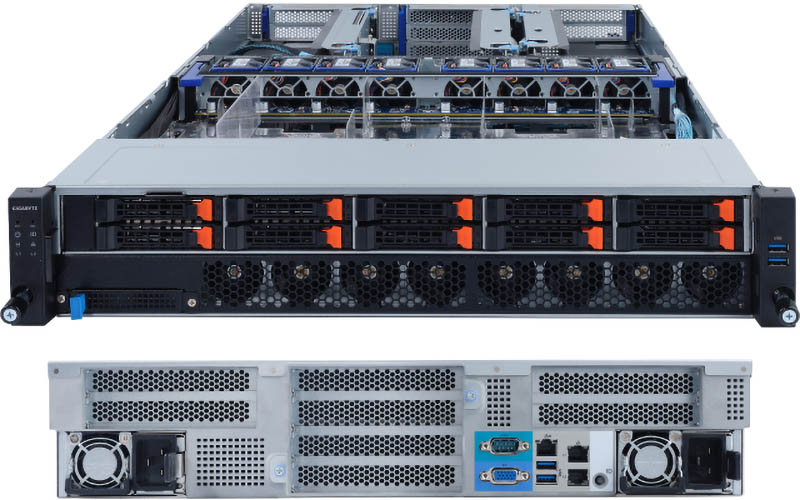
At the rear, one can see a myriad of PCIe slots. There are a total of eight slots. We can see how these slots are wired via the block diagram.
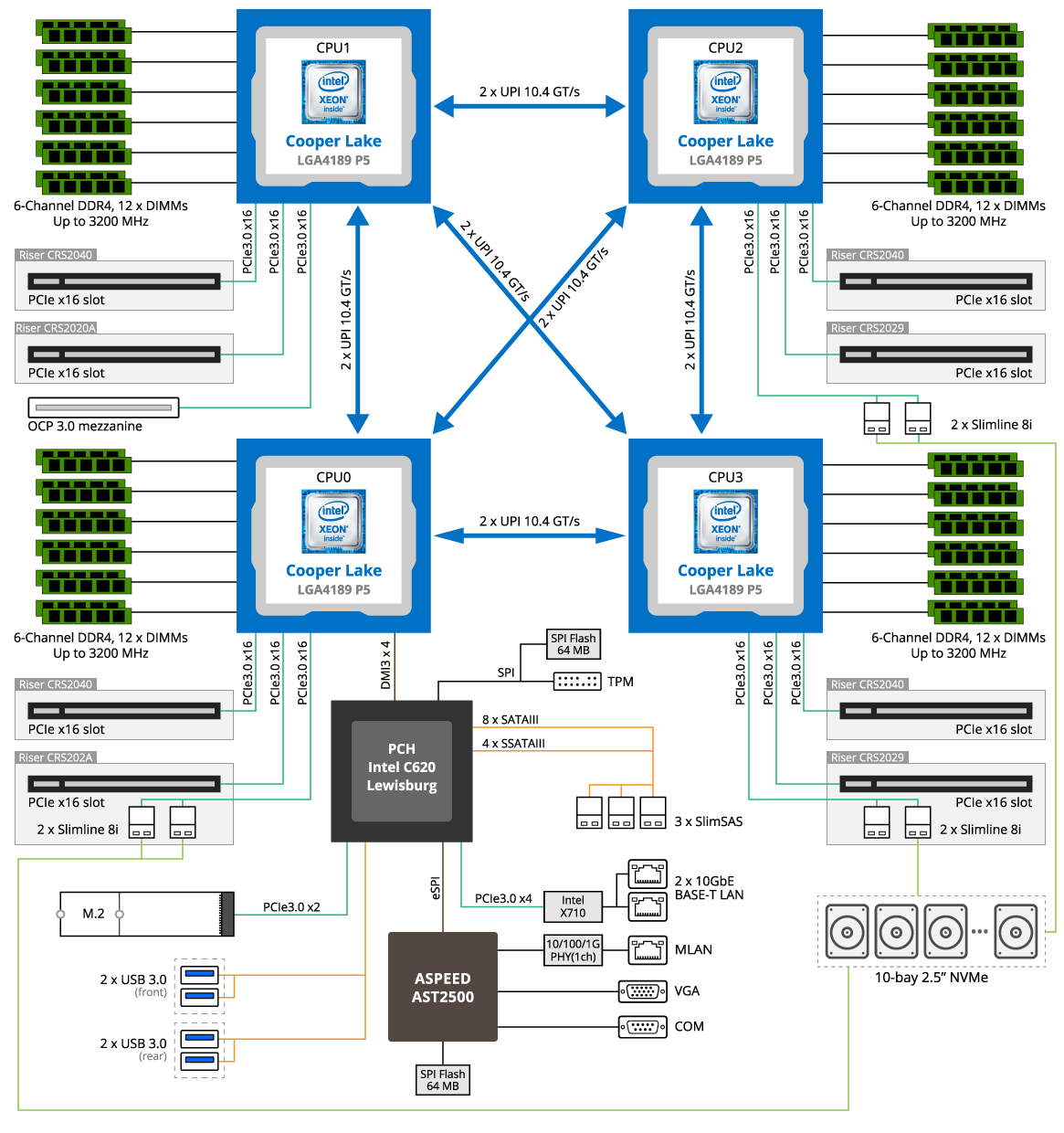
In this configuration, each CPU provides connectivity for two x16 slots. That gives more flexibility to accelerators and add-in PCIe cards that are not as power-hungry as GPUs.
Final Words
It is a big deal to see Gigabyte push into the 4-socket server space. One will notice another small nugget in that these systems are not using the Intel C620A PCH’s for their Intel 700 series 10GbE. Instead, Gigabyte is using a new Intel X710-AT2 NIC for onboard 10GbE connectivity.
Hopefully, when Cooper Lake CPUs start their volume shipments, we will get to see more of these designs. These will be the company’s mainstream 4-socket offerings until 2021 when Intel said it plans to release its Sapphire Rapids generation of platforms.

